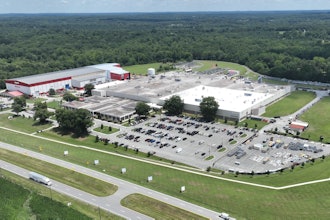
Digital Transformation (DT) is coming of age. In the recent Digital Change Survey commissioned by IFS, 80 percent saw themselves as “enabled, enhanced or optimized” to leverage DT. Even more impressively, 89 percent said they had “advantageous” or “adequate” funding in place for digital projects—a clear acknowledgment that the time of disruptive technologies is here.
But why are businesses investing? Where do they see the big profits? And how successfully are they selling digital change throughout their organizations?
Beyond Efficiency
The survey found that over a quarter (27 percent) of companies say digital transformation makes them more competitive. Additionally, 29 percent see the main benefit as accelerating innovation and 28 percent feel that growth opportunities in new markets are the primary advantage.
Companies using digital transformation to ask far-reaching strategic questions—like “can I use it to get myself a bigger share on the market, or increase my product portfolio?”—are making the most of the long-term, strategic opportunities. They’re sensing how it can transform even seemingly small tactical decisions into key strategic differentiators.
But these companies are in the minority. The largest group in the survey, 47 percent, still see the main benefits of DT as “improving internal process efficiencies”, which makes me wonder: do companies really see the full potential?
Innovation can make or break a company, and study after study foregrounds it as a C-level priority. So why doesn’t it appear to be a driver for digital transformation?
Considering technology investments, this could mean that the majority of funds are invested in making internal processes more effective and thereby failing to enable innovation. Improved internal efficiency as the key reason to explore DT is, in my view, too short sighted. It fails to exploit the strategic benefits and makes it more difficult to win the understanding and commitment of the staff.
Overcoming Fear of Change
Despite plenty of good news, the survey still reveals that 42 percent of respondents view aversion to change as the main barrier to digital transformation. Companies need to think carefully about how they position IoT and other disruptive technologies, how they tell the story of why they are using them, and how they communicate the benefits to their entire workforce—transforming staff from data-phobes to data fans.
The most successful technology shifts are embraced from the bottom up, as well as the top down —they’re driven by people. The buy-in from staff is mission-critical. The opportunities for growth and improvement for all need to be communicated clearly and openly.
Imagine a service engineer hearing predictive maintenance is to be deployed. “That’s going to put me out of a job” would be a common reaction. In this scenario, stressing the big-picture, long-term strategy (we’re going to be more competitive/accelerate innovation/win growth opportunities in new markets) would be more inspiring than the short-term tactical benefits (we’re improving internal efficiencies).
Digital transformation needs to be managed on a human scale. Painting the big picture in positioning digital change as strategic and not tactical, as inspiring and not invasive, is vital.
Three Pillars for Success
There are three pillars to succeed with digital transformation—technology, investment and people.
- The technology aspect is often mastered most successfully, as it is driven by technology experts with clearly dedicated areas of responsibility. The main question is whether you are focusing on the right technology to drive transformation at the right time. Do you want to be the pioneer taking risks or jump on the bandwagon when the technology is more mature?
- As we saw in this survey, companies think that they are investing enough in digital transformation, but are they focusing on the right areas? The results indicate that there is a heavy focus on process efficiencies, so there could be a need to steer the focus towards more innovation-focused investments.
- Finally, the factor that is most often forgotten in the digital transformation process is your people. This is important from both a talent and communications perspective. If over 40 percent view “aversion to change” as the main barrier, employee communications is of utmost importance to make sure that your staff knows the purpose of change and how they are affected.
So, it’s high time to ask: Where do you need to focus to build these pillars and be successful in your digital transformation?






















